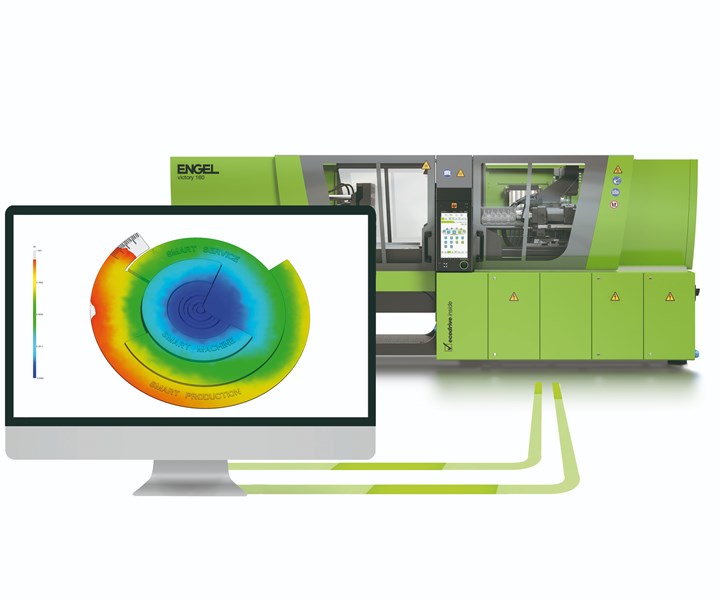Simulation Is Making Injection Machines Smarter
Engel’s simlink will refine offline simulation with results from actual molding and use Engel’s machine data to constrain simulation within the actual machine’s capabilities.
October’s K 2019 show in Düsseldorf revealed progress toward realizing the long-held goal of integrating mold-filling simulation with injection molding machines (see show report in January issue). News from Engel includes a collaboration with Autodesk Moldflow to integrate simulation with injection process control. While other machine builders, like Arburg, Wittmann Battenfeld and, most recently, Sumitomo Demag (see below), are investigating ways to use flow simulation to analyze the injection process in real time, Engel is focused on using simulation offline to optimize both the prediction of molding results and the actual machine settings for a given mold. This simlink software is now being tested with specific customers and is expected to become available globally in 2020.

Engel is developing simlink for two-way communication between the injection machine and offline simulation.
Engel envisions two-way communication. On the one hand, the machine can tell Moldflow what its true processing capabilities are, so that the simulation can recommend more realistic process settings that can be achieved by this specific machine. After performing the simulation based on the constraints of the actual machine’s performance capabilities, the process settings can be imported directly into Engel’s CC300 machine controller. Then, after performing a real-world molding trial, the process results can be re-transmitted to Moldflow to refine the simulation based on what really occurred inside the mold. Further optimized process settings can then be uploaded again to the injection press.
This approach is based on use of Engel’s econnect customer portal. The user can go online and select the machine intended for a molding job, and then download from Engel the parameters for machine capabilities—speeds, pressures, acceleration ramps, and temperatures. That way, Engel says, the simulation won’t recommend process values for a machine you don’t have.
Sumitomo (SHI) Demag also revealed at the show that it is working toward integrated mold-filling simulation with its injection-machine controls. Sumitomo Demag is collaborating with German software startup SHS plus GmbH to develop online simulation of plastication, filling and cooling, along with a knowledge database. Artificial intelligence (AI) will use that database to predict melt quality and temperature and use those to optimize the filling simulation.
Related Content
-
Three Key Decisions for an Optimal Ejection System
When determining the best ejection option for a tool, molders must consider the ejector’s surface area, location and style.
-
Process Monitoring or Production Monitoring — Why Not Both?
Molders looking to both monitor an injection molding process effectively and manage production can definitely do both with tools available today, but the question is how best to tackle these twin challenges.
-
Got Streaks or Black Specs? Here’s How to Find and Fix Them
Determining the source of streaking or contamination in your molded parts is a critical step in perfecting your purging procedures ultimately saving you time and money.







